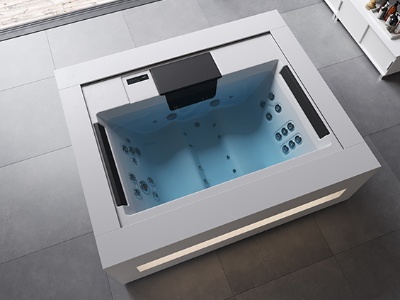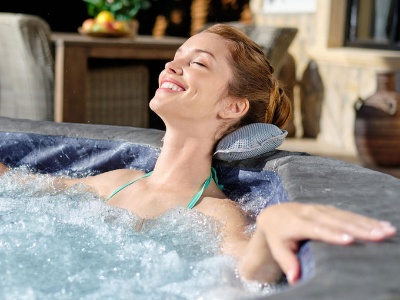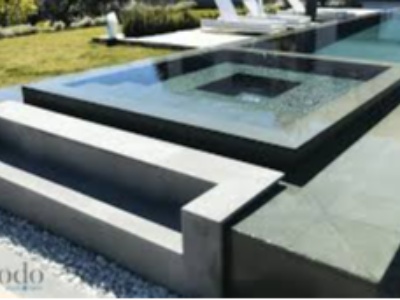
When it comes to securing and protecting a swimming pool, the choice of an automatic cover is a popular solution among owners. Among the various options available, the submerged cover is considered the best alternative in terms of aesthetics, performance and discretion. Unlike above-ground shutters, which remain visible, an underwater shutter is designed to integrate perfectly with the pool, offering a more harmonious finish and optimal protection.
Why choose an underwater shutter rather than an above-ground model?
The main advantage of an underwater shutter is that it integrates discreetly into the pool. Unlike above-ground models, which require a visible external roller, the submerged cover is hidden under the water line, generally in a box integrated into the structure of the pool. This solution offers a superior aesthetic finish and avoids any visual clutter on the coping stones. In addition to the aesthetic aspect, a submerged cover also optimises the space around the pool. As it is fully recessed, it does not require additional space, which is ideal for small gardens or spaces where optimisation is essential. Finally, in terms of protection and maintenance, it has many advantages, which we will detail below.Increased protection for the safety of your pool
Safety is one of the fundamental criteria when choosing an automatic cover. In accordance with the NF P90-308 standard, the submerged cover provides effective protection against the risk of drowning, particularly for young children and pets. Its robust structure prevents any unintentional access to the pool when it is closed. Unlike safety covers, which require manual handling and storage after use, the automatic submerged cover is activated in a few seconds via a motorised system. This ease of use guarantees that the pool remains protected at all times, without any additional effort on the part of the owner. A submerged cover contributes significantly to the conservation of the water temperature. By limiting evaporation and protecting the pool from night-time temperature changes, it helps maintain a more stable temperature, thus reducing the need for heating. This is particularly advantageous for swimming pools equipped with a heating system, as it limits energy consumption.In addition, some models of submerged slats are equipped with polycarbonate solar slats, which are able to absorb and reflect the sun's heat. This type of slat allows you to gain a few extra degrees during the day, thus extending the swimming period without having to resort to additional heating.
Reduced maintenance and chemical consumption
The submerged cover acts as a barrier against external impurities such as leaves, insects or dust. By protecting the pool from debris, it reduces the strain on the filtration system and limits the pool's fouling. Less dirt also means less manual intervention to clean the water, which saves a considerable amount of time.By preventing impurities from accumulating and limiting exposure to UV rays, the submerged cover slows down the proliferation of algae and bacteria. The result: a cleaner pool and reduced consumption of chemical products for water treatment.
How do you install an underwater cover?
Installing an underwater cover requires careful planning, especially if the pool has already been built. Ideally, this type of cover is integrated from the design stage of the pool to ensure a perfect fit. However, there are solutions for adding it to an existing pool thanks to specific installation systems. The installation of an underwater cover generally involves: The installation of a roller box below the water line, which can be located in a dividing wall or in a movable floor.The cost of an underwater shutter: a profitable investment
An underwater shutter represents a more significant investment than an above-ground shutter due to its more complex design and installation. Prices generally vary between 6,000 and 15,000 euros depending on the materials, motorisation and options chosen. Despite this high initial cost, this investment is quickly amortised thanks to the savings made on:- Energy consumption, by limiting heating requirements.
- Maintenance, by reducing the use of chemicals and cleaning of the pool.
- The longevity of the pool, by protecting the liner against external aggressions.




